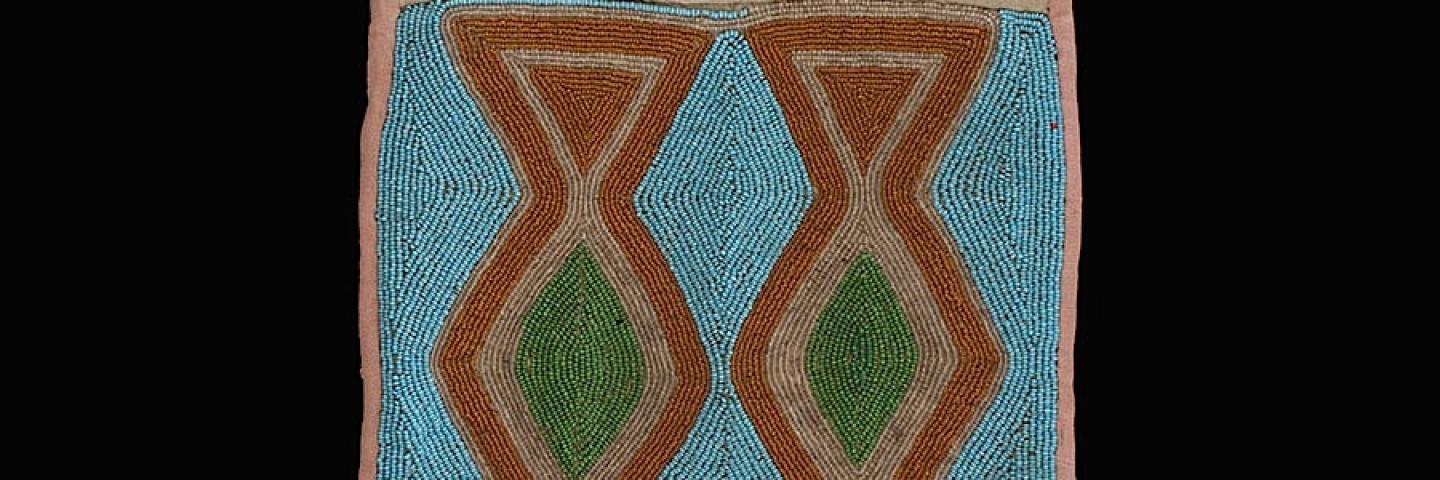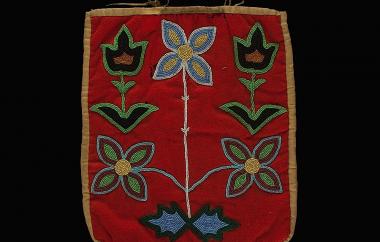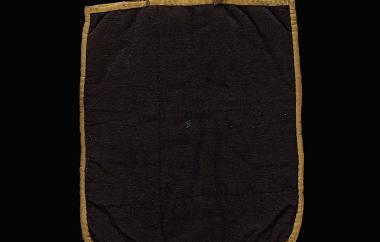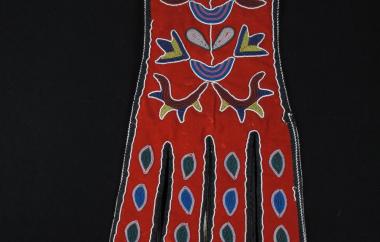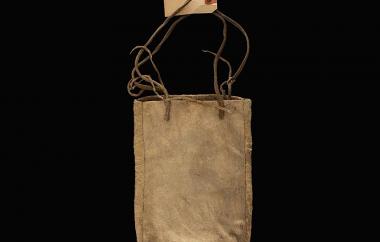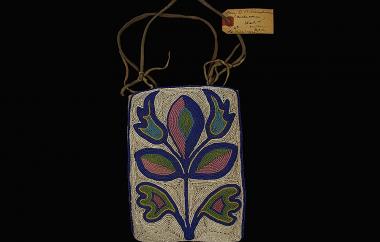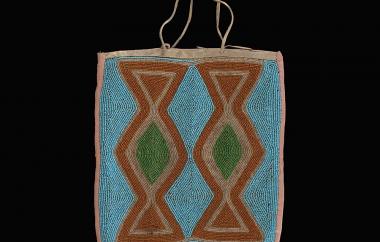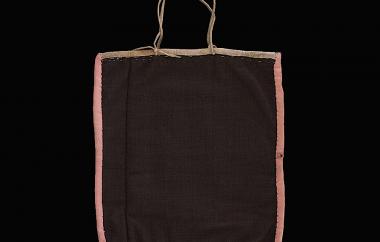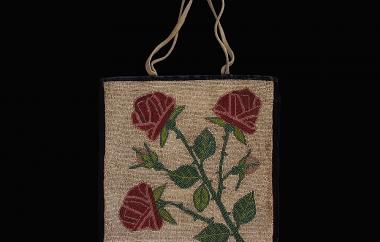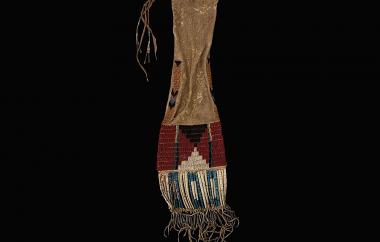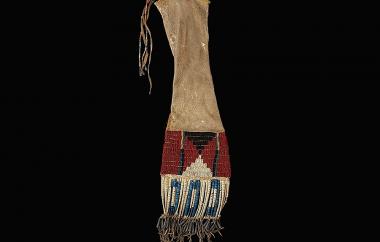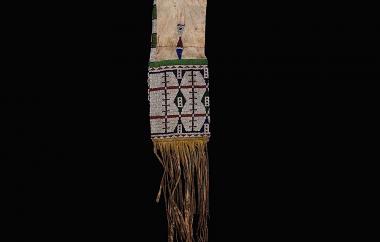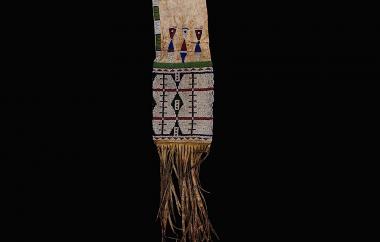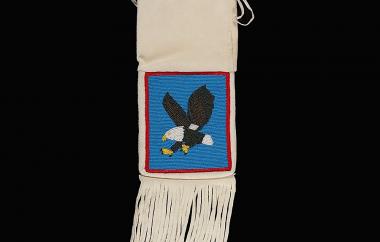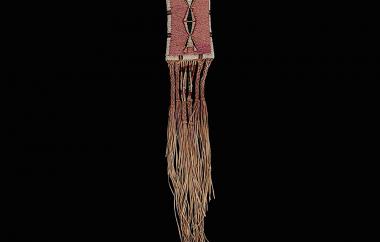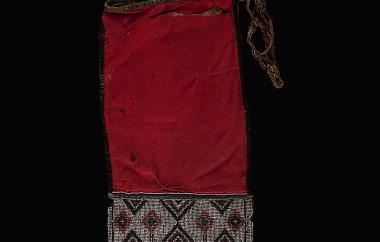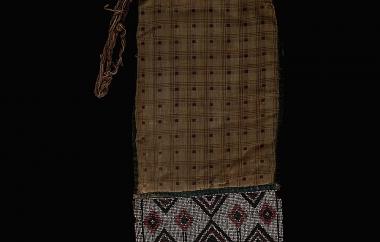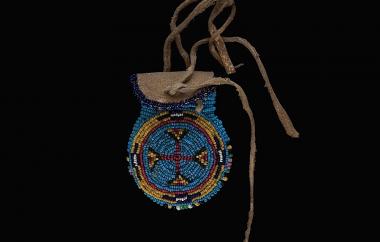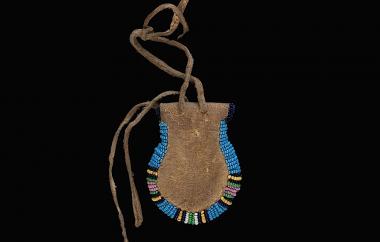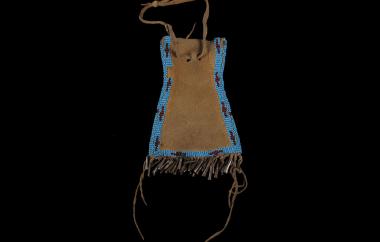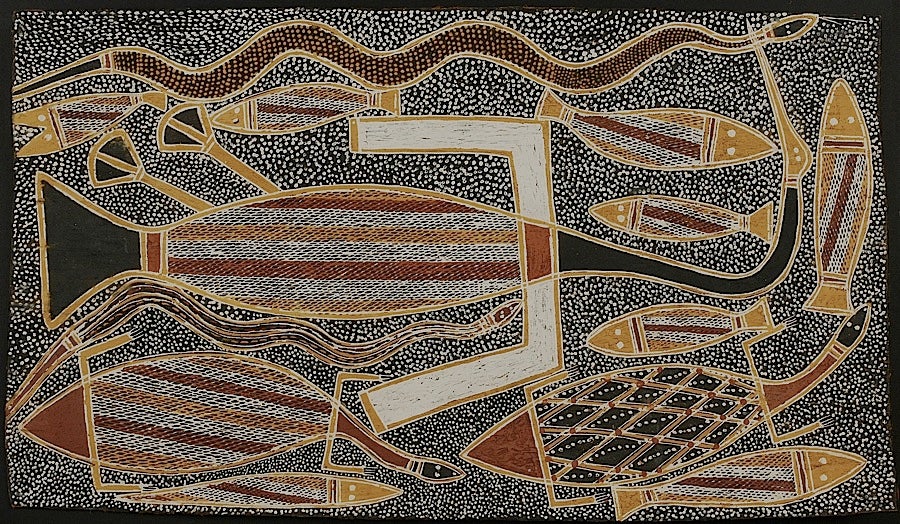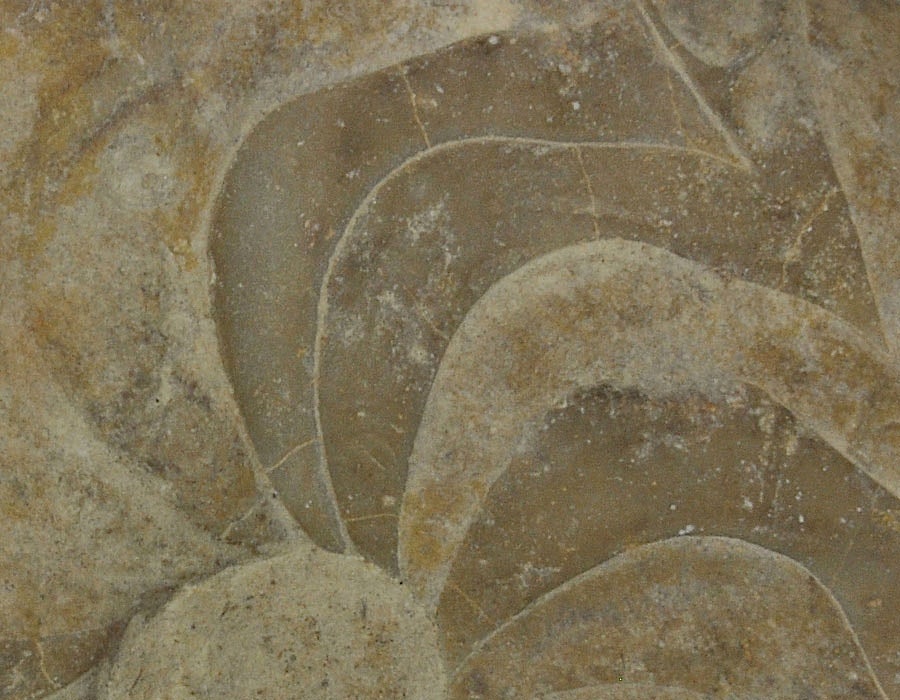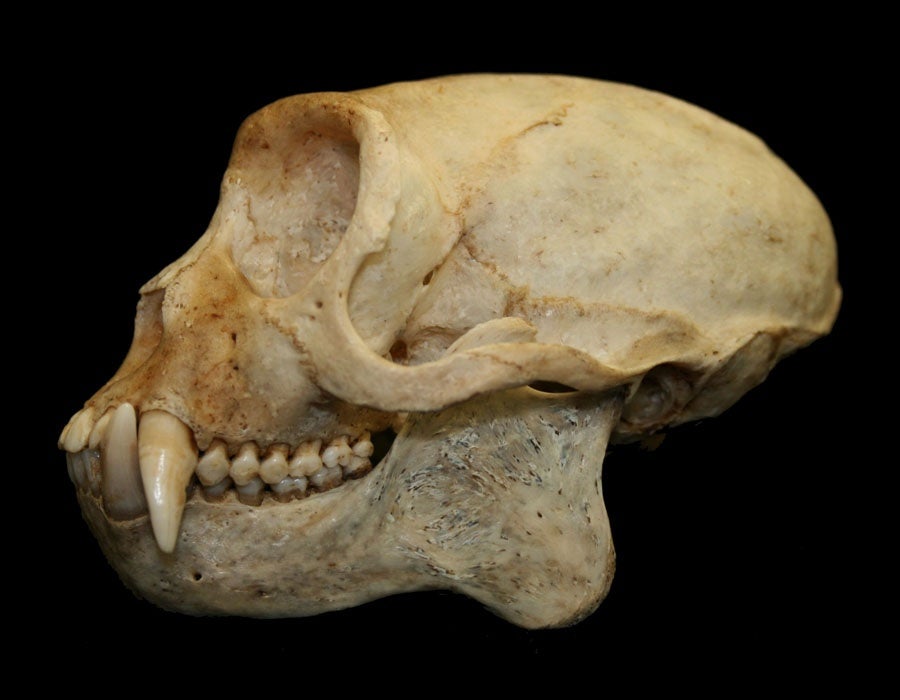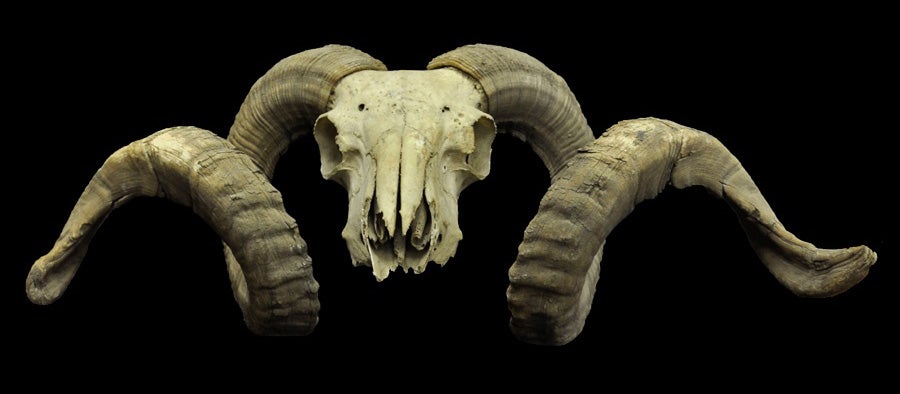Native people of the Great Plains are as famous for their beadwork as they are for their emphasis on horses and the buffalo hunt. The expansion of the fur trade in the 18th century spread guns and other trade goods. It combined with the northward movement of horses of Spanish origin from the Southwest to precipitate population movements and transformations that would reshape the Native American West. After 1860, when seed beads in many colors became widely available, together with steel needles, knives, and awls, stylistic diversity increased dramatically. The multitude of tribal origins and contacts is reflected in identifiable stylistic traditions, each with characteristic techniques, motifs, and colors.
People of the Columbia Plateau traditionally relied on salmon, roots and local game. Acquisition of horses around 1730 promoted expeditions across the Rockies to hunt buffalo, and eastern Plateau groups like the Nez Perce intensified existing connections with neighboring Plains Tribes. Thus Plateau beadwork shares a Transmontane geometric style with the Crow, long-time allies. Designs emphasize panels or bands divided by transverse stripes containing smooth hourglass or triangular forms in pastel colors, against a light blue or lavender pink background. A second Plateau beadwork tradition depicted floral motifs, first stylized, later more realistic, and images of people, animals, landscapes, and other contemporary themes were added in the late 19th century.
Beading was historically women’s work in Native Plains and Plateau societies. Both women and men gained respect when their families were well-dressed, women for industriousness and artistry and men as hunters and providers for supplying the skins. Often girls learned to bead from an older relative or other elder. The examples shown here represent a sample of Plains and Plateau beaded bags and pouches from the museum’s collections. Images © UO Museum of Natural and Cultural History. Production of this gallery received generous funding from The Ford Family Foundation and the Oregon Cultural Trust.
Further Reading:
Dubin, Lois Sherr
1999 North American Indian Jewelry and Adornment. Harry N. Abrams, Inc., Publishers, N.Y.
Brasser, Theodore
2009 Native American Clothing: An Illustrated History. Firefly Books, Ltd, Buffalo, N.Y.
John M. Gogol
1985 Columbia River/Plateau Indian Beadwork. American Indian Basketry and other Native Arts No 18.
Mary D. Schlick and Kate C. Duncan
1991 Wasco-Style Woven Beadwork -- Merging Artistic Traditions. American Indian Art Magazine. 16(3):36-45.
Catalog # 1-776
Beaded bag (side one)
Early floral beaded bag, Columbia Plateau, probably third quarter of 19th century. Early style featured symmetrical and stylized three-part designs on exposed background, decorated on one face.
1.5 x 31 x 37 cm
Catalog # 1-776
Beaded bag (side two)
Early floral beaded bag, Columbia Plateau, probably third quarter of 19th century. Early style featured symmetrical and stylized three-part designs on exposed background, decorated on one face.
1.5 x 31 x 37 cm
Catalog # 1-12046
Octopus bag (side two)
Octopus bag, Columbia Plateau. Named for their tentacle-like tabs, octopus bags are known from the mid-1700s in the upper Great Lakes region; variations spread west with the fur trade.
25 x 52 cm
Catalog # 1-12046
Octopus bag (side one)
Octopus bag, Columbia Plateau. Named for their tentacle-like tabs, octopus bags are known from the mid-1700s in the upper Great Lakes region; variations spread west with the fur trade.
25 x 52 cm
Catalog # 1-12045
Beaded bag (side two)
Floral beaded bag, Columbia Plateau. Stylized tripartite design of early Plateau beadwork and contour beading are common on fully-beaded pieces from the fourth quarter of the 19th century.
15 x 20 cm
Catalog # 1-12045
Beaded bag (side one)
Floral beaded bag, Columbia Plateau. Stylized tripartite design of early Plateau beadwork and contour beading are common on fully-beaded pieces from the fourth quarter of the 19th century.
15 x 20 cm
Catalog # 2-15458
Beaded bag (side one)
Beaded bag with hour-glass style design, Columbia Plateau. Contour-beaded with hour-glass motifs reminiscent of painted parfleches and woven cornhusk bags.
25 x 28 cm
Catalog # 2-15458
Beaded bag (side two)
Beaded bag with hour-glass style design, Columbia Plateau. Contour-beaded with hour-glass motifs reminiscent of painted parfleches and woven cornhusk bags.
25 x 28 cm
Catalog # 2-15735
Beaded bag (side one)
Floral beaded bag, Columbia Plateau. Naturalistic floral designs are characteristic of later Plateau beadwork.
28.5 x 29 cm
Catalog # 2-15735
Beaded bag (side two)
Floral beaded bag, Columbia Plateau. Naturalistic floral designs are characteristic of later Plateau beadwork.
28.5 x 29 cm
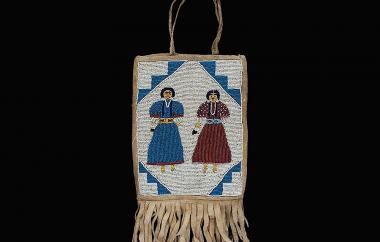
Catalog # 2-17175 Beaded bag (side one) Bag with women in traditional Plateau dress and hairstyle; eagle feathers held in each woman’s right hand are sacred symbols of the Washani or “Dreamer” religion. Five-pointed star or stylized flower on back of bag would have been visible to its owner and may have special meaning. 6.25 x 8 cm
Catalog # 2-17175
Beaded bag (side one)
Bag with women in traditional Plateau dress and hairstyle; eagle feathers held in each woman’s right hand are sacred symbols of the Washani or “Dreamer” religion. Five-pointed star or stylized flower on back of bag would have been visible to its owner and may have special meaning.
6.25 x 8 cm

Catalog # 2-17175 Beaded bag (side two) Bag with women in traditional Plateau dress and hairstyle; eagle feathers held in each woman’s right hand are sacred symbols of the Washani or “Dreamer” religion. Five-pointed star or stylized flower on back of bag would have been visible to its owner and may have special meaning. 6.25 x 8 cm
Catalog # 2-17175
Beaded bag (side two)
Bag with women in traditional Plateau dress and hairstyle; eagle feathers held in each woman’s right hand are sacred symbols of the Washani or “Dreamer” religion. Five-pointed star or stylized flower on back of bag would have been visible to its owner and may have special meaning.
6.25 x 8 cm
Catalog # 2-7336
Pipe bag (side one)
Great Plains, Upper Missouri. Lane stitch beadwork is augmented by the design formed by the quill-wrapped fringe.
13 x 52 cm
Catalog # 2-7336
Pipe bag (side two)
Great Plains, Upper Missouri. Lane stitch beadwork is augmented by the design formed by the quill-wrapped fringe.
13 x 52 cm
Catalog # 2-17078
Pipe bag (side one)
Central Plains. Delicate geometric designs on white background and use of lane stitch are typical of Central Plains beadwork.
2 x 16.5 x 73.5 cm
Catalog # 2-17078
Pipe bag (side two)
Central Plains. Delicate geometric designs on white background and use of lane stitch are typical of Central Plains beadwork.
2 x 16.5 x 73.5 cm
Catalog # 1-46630
Pipe bag (side one)
by Sherley Patrick, Columbia Plateau, Yakama. Purchased in 2005. Animals and patriotic imagery are popular in figurative 20th century Plateau beadwork.
15 x 43 cm
Catalog # 1-46630
Pipe bag (side two)
by Sherley Patrick, Columbia Plateau, Yakama. Purchased in 2005. Animals and patriotic imagery are popular in figurative 20th century Plateau beadwork.
15 x 43 cm
Catalog # 1-12719
Mirror bag (side one)
with porcupine quill-wrapped fringe, Columbia Plateau, Cayuse. Transmontane style beadwork, sometimes referred to as Crow stitch.
14 x 82 cm
Catalog # 1-12719
Mirror bag (side two)
with porcupine quill-wrapped fringe, Columbia Plateau, Cayuse. Transmontane style beadwork, sometimes referred to as Crow stitch.
14 x 82 cm
Catalog # 1-779
Cloth bag (side one) with woven panel. Probably Columbia Plateau. The fur trade spread panel bags from the Great Lakes to the Pacific Northwest.
20.8 x 36.2 cm
Catalog # 1-779
Cloth bag (side two) with woven panel. Probably Columbia Plateau. The fur trade spread panel bags from the Great Lakes to the Pacific Northwest.
20.8 x 36.2 cm
Catalog # 2-15555
Woven beadwork (side one)
Two-sided bead-woven pouch. Probably Columbia Plateau. Woven beadwork from the Columbia Plateau is often attributed to Chinookan-speaking Wasco and Wishram peoples.
6.5 x 16 cm
Catalog # 2-15555
Woven beadwork (side two)
Two-sided bead-woven pouch. Probably Columbia Plateau. Woven beadwork from the Columbia Plateau is often attributed to Chinookan-speaking Wasco and Wishram peoples.
6.5 x 16 cm
Catalog # 2-402
Beaded pouch (side one) southern Plains, Uintah Reservation, probably Ute. Received in 1930. Used in the Peyote Religion to carry Chief Peyote, the holy sacrament in what is today the Native American Church.
2 x 2.5 cm
Catalog # 2-402
Beaded pouch (side two) southern Plains, Uintah Reservation, probably Ute. Received in 1930. Used in the Peyote Religion to carry Chief Peyote, the holy sacrament in what is today the Native American Church.
2 x 2.5 cm
Catalog # 2-615
Strike-a-light pouch (side one), southern Plains, Uintah Reservation, probably Ute. Strike-a-light pouches contained steel and flint used to start a fire.
1 x 10 x 14 cm
Catalog # 2-615
Strike-a-light pouch (side two), southern Plains, Uintah Reservation, probably Ute. Strike-a-light pouches contained steel and flint used to start a fire.
1 x 10 x 14 cm
Catalog # 2-1352
Beaded pouch (side one) with horse motif, Nez Perce. The horse’s spotted haunches are distinctive of the Appaloosa, a breed developed by the Nez Perce.
1 cm, 9 cm diameter
Catalog # 2-1352
Beaded pouch (side two) with horse motif, Nez Perce. The horse’s spotted haunches are distinctive of the Appaloosa, a breed developed by the Nez Perce.
1 cm, 9 cm diameter
Catalog # 2-19444
Beaded bag (side one)
Beaded flat bag with fringe and carrying strap, Plains/Plateau region. Likely made in the early 20th century.
34 x 30 cm
Catalog # 2-19444
Beaded bag (side two)
Beaded flat bag with fringe and carrying strap, Plains/Plateau region. Likely made in the early 20th century.
34 x 30 cm
